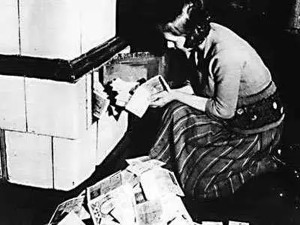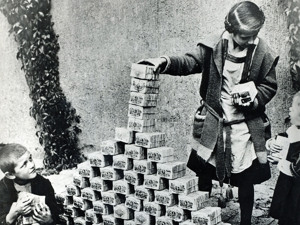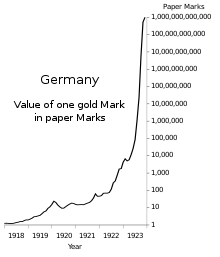Tavex uses cookies to ensure website functionality and improve your user experience. Collecting data from cookies helps us provide the best experience for you, keeps your account secure and allows us to personalise advert content. You can find out more in our cookie policy.
Please select what cookies you allow us to use
Cookies are small files of letters and digits downloaded and saved on your computer or another device (for instance, a mobile phone, a tablet) and saved in your browser while you visit a website. They can be used to track the pages you visit on the website, save the information you enter or remember your preferences such as language settings as long as you’re browsing the website.
| Cookie name | Cookie description | Cookie duration |
|---|---|---|
| tavex_cookie_consent | Stores cookie consent options selected | 60 weeks |
| tavex_customer | Tavex customer ID | 30 days |
| wp-wpml_current_language | Stores selected language | 1 day |
| AWSALB | AWS ALB sticky session cookie | 6 days |
| AWSALBCORS | AWS ALB sticky session cookie | 6 days |
| NO_CACHE | Used to disable page caching | 1 day |
| PHPSESSID | Identifier for PHP session | Session |
| latest_news | Helps to keep notifications relevant by storing the latest news shown | 29 days |
| latest_news_flash | Helps to keep notifications relevant by storing the latest news shown | 29 days |
| tavex_recently_viewed_products | List of recently viewed products | 1 day |
| tavex_compare_amount | Number of items in product comparison view | 1 day |
| Cookie name | Cookie description | Cookie duration |
|---|---|---|
| chart-widget-tab-*-*-* | Remembers last chart options (i.e currency, time period, etc) | 29 days |
| archive_layout | Stores selected product layout on category pages | 1 day |
| Cookie name | Cookie description | Cookie duration |
|---|---|---|
| cartstack.com-* | Used for tracking abandoned shopping carts | 1 year |
| _omappvp | Used by OptinMonster for determining new vs. returning visitors. Expires in 11 years | 11 years |
| _omappvs | Used by OptinMonster for determining when a new visitor becomes a returning visitor | Session |
| om* | Used by OptinMonster to track interactions with campaigns | Persistent |
| Cookie name | Cookie description | Cookie duration |
|---|---|---|
| _ga | Used to distinguish users | 2 years |
| _gid | Used to distinguish users | 24 hours |
| _ga_* | Used to persist session state | 2 years |
| _gac_* | Contains campaign related information | 90 days |
| _gat_gtag_* | Used to throttle request rate | 1 minute |
| _fbc | Facebook advertisement cookie | 2 years |
| _fbp | Facebook cookie for distinguishing unique users | 2 years |
The Lessons of Weimar Republic's Hyperinflation: A Cautionary Tale for Modern Economies

The Weimar Republic, which was established in 1919 after World War I, faced significant economic challenges during its existence. One of the most significant challenges was hyperinflation, which took place from 1922 to 1923.
The hyperinflation began when the Weimar government chose to print more money to pay off its reparation debt instead of addressing the underlying economic issues. As a result, by July 1922, prices had risen by some 700 percent, and hyperinflation had arrived. The value of the mark deteriorated steadily during the immediate post-World War I years due to several factors, including reparation payments, the flight of German capital abroad, obstacles to the revival of German foreign trade, and a consequent adverse balance of payments.

The effects of hyperinflation were devastating to the German economy and the German people. The value of the mark continued to plummet, and by November 1923, one US dollar was worth 4,210,500,000,000 German marks. The hyperinflation had become so severe that million-mark notes and then billion-mark notes were printed. A loaf of bread that cost around 160 Marks at the end of 1922 cost 200,000,000,000 Marks by late 1923. On one day alone, October 25th, 1923, the Weimar government released banknotes with a face value of 120,000,000,000,000 Reichsmarks.

The hyperinflation had severe consequences for the German people. Widespread poverty and unemployment occurred, and many people lost their savings and their businesses. The impact was felt throughout society, with many people struggling to afford basic necessities such as food and housing. There was also a significant impact on the country’s political stability, with many people losing faith in the government’s ability to manage the economy.
On one day alone, October 25th, 1923, the Weimar government released banknotes with a face value of 120,000,000,000,000 Reichsmarks.
The Weimar Republic was eventually able to stabilize the economy by implementing a new currency, the Rentenmark, and instituting economic reforms. The Rentenmark was backed by land and had a fixed exchange rate with the US dollar. Additionally, the government instituted policies to reduce government spending, increase taxes, and increase interest rates to control inflation. These policies helped stabilize the economy, and by the mid-1920s, the German economy began to recover.

The experience of hyperinflation in the Weimar Republic remains a cautionary tale for modern economies. It is a stark reminder of the dangers of printing money and the importance of sound economic policies. The Weimar Republic’s hyperinflation is often cited as one of the contributing factors to the rise of Adolf Hitler and the Nazi Party in the 1930s. The Nazi Party was able to exploit the economic crisis to gain support and ultimately come to power.
In conclusion, hyperinflation was a significant economic challenge faced by the Weimar Republic. The government’s decision to print more money to pay off its reparation debt instead of addressing underlying economic issues led to hyperinflation, which had a devastating impact on the German people and the country’s political stability. The Weimar Republic eventually stabilized the economy through the implementation of a new currency and economic reforms. The lessons learned from the hyperinflation experience are still relevant today and serve as a reminder of the dangers of unsound economic policies.

















